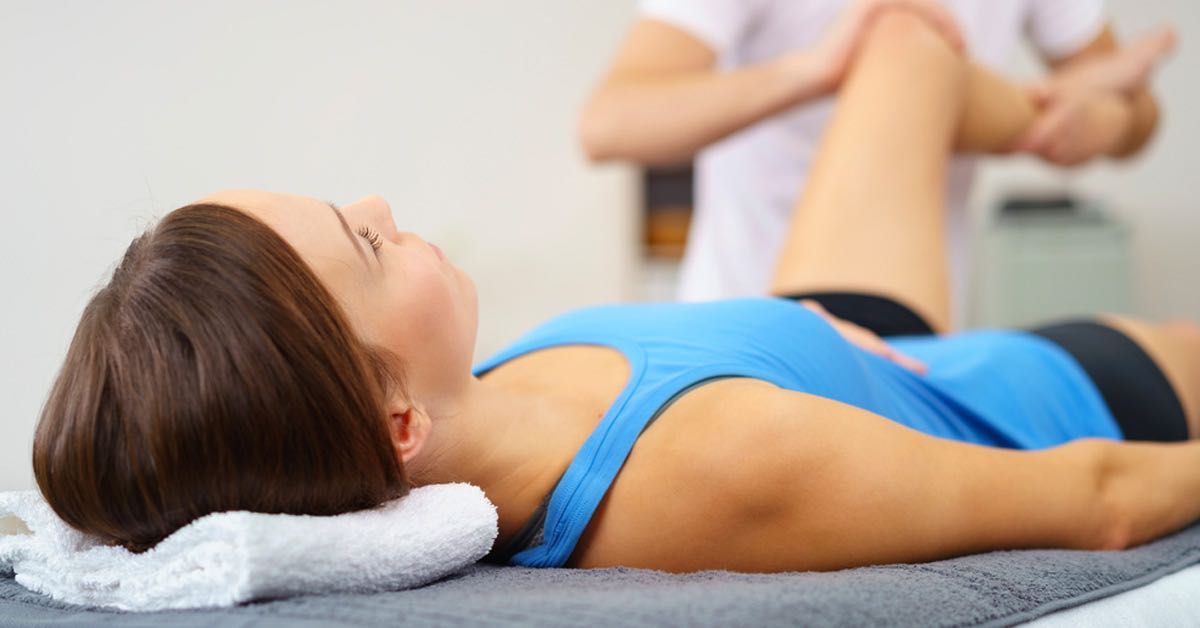The Role of Physiotherapy in Osteoarthritis
Osteoarthritis is the most common form of arthritis and can affect any joint. It can cause inflammation, pain, and reduce range of motion in the affected joint.
Physiotherapy Gregory Hills is an important part of treatment for many people with osteoarthritis. It can reduce the symptoms and slow the progression of the disease, allowing you to maintain an active lifestyle.

User Experiences
Osteoarthritis (OA) is a condition in which the joint cartilage within a joint starts to wear down over time. This can lead to stiffness, pain, and swelling in the affected region. OA can also lead to a loss of strength as the muscles in the affected area weaken due to the decreased movement in the affected joint.
Your physiotherapist can provide you with a variety of exercises that will strengthen and improve your joint mobility. They can design a program specifically for you based on your goals and needs.
They will also be able to provide you with key insight into the latest treatment and technology options that are available for your condition. They will be able to recommend a treatment that is most likely to provide you with the results you desire while still being cost-effective and safe for you.
They will use a combination of computer-based technology and a physiotherapist to create a program that suits your needs and requirements. They will be able to recommend if there are any additional programs that they think you may be interested in. This could be an exercise program, a specific piece of equipment that they believe will help your condition progress quicker or an online based consultation with a therapist.
FAQs
Ndis physiotherapy can help with osteoarthritis. It offers a variety of services. These include hands-on treatment, exercise (range of motion, strength, balance, gait), pain management modalities, and education.
A physiotherapist can offer advice and suggestions for lifestyle changes that can be made in order to reduce pain and improve joint function. They can help you plan your activities to avoid inadvertently aggravating your joint or causing further damage.
Your physiotherapist will work with you to develop a treatment plan that is tailored to you and your goals, and may recommend specific exercises for your arthritis. This could include stretching to improve flexibility and range of motion exercises for your shoulder or knee.
Regular exercise is a common way for people with OA to manage their symptoms. This is because exercise improves joint mobility, increases the strength of muscles around the joints, and decreases the pain caused by the disease.
Osteoarthritis is a condition that can cause pain, stiffness, and swelling in the joints of the hands, fingers, knees, hips, and spine. It is often due to injury or age.
The cartilage between the ends of bones is usually affected in OA, and as this wears away, the bones begin to rub against each other. This causes crackling and grating sensations as well as bony outgrowths called osteophytes.
Osteoarthritis is a common condition that can affect anyone at any age, but it's most prevalent in older adults. OA symptoms can be debilitating and disrupt your daily life. This is why it's important to see a doctor or healthcare professional if you are experiencing severe pain and discomfort.
Role of Physiotherapy for Osteoarthritis
There are many techniques that physiotherapists can use to improve your strength and mobility. These include exercises, ultrasound, hydrotherapy and TENS (transcutaneous electrical nerve stimulation). They may also recommend a variety of ways to help you manage your condition at-home.
Unlike physical therapy, which is more exercise-based and tends to be hospital-based, physiotherapy is a holistic health care profession that treats problems with movement, manual therapies, education and advice. It is based on the belief that all aspects should be considered when treating any injury or illness.
A physiotherapist can offer a variety of treatment options for osteoarthritis. These include manual therapy, education, and exercise. They will help you find the right combination of treatments to best suit your needs.
They may also be able to give you tips and tricks to improve your strength. This will help you avoid injury and recurrent pain. They might also offer advice on diet, which can reduce inflammation or swelling in your joints.
Some physiotherapists are also trained to teach patients about joint protection strategies, which will help them prevent injury to their knee joints. They will advise them to avoid carrying heavy weights or doing activities that put too much strain on their knees. They will also show them how to walk in a way they can help their knees.
The most important role of physiotherapy is to relieve pain and promote mobility, which can be achieved by doing a variety of exercises. These exercises will help reduce pain by strengthening your muscles. These exercises will improve your mobility and strength, allowing you to live a more active life.

Physiotherapy at home is a great option for Osteoarthritis
Physiotherapy is a great way to manage osteoarthritis. It can relieve stiffness, improve flexibility and make it easier to move your joints.
Osteoarthritis refers to a condition where the cartilage that cushions your bones' ends begins to wear down. This can be caused by general wear and tear or a sign of rheumatoid joint disease.
Osteoarthritis is characterized by stiffness and pain in the affected joints as well as difficulty moving them. For some people, these symptoms may come and go, but for others they can become more regular and severe.
It can be difficult for one to predict the extent of damage that will occur in a joint and how painful it will become. Some people will experience mobility and pain problems, while others may not feel any symptoms.
Exercise can be a great way to prevent osteoarthritis from developing and it can also slow down the progression of the condition. Your joint health can be improved by just 30 minutes of moderately vigorous activity five days per week, such as walking or gardening, or swimming.
You can keep your body strong and fit by adding strength and flexibility training to your daily routine. A physiotherapist will show you how to strengthen your muscles and increase your range of motion.
Physiotherapy can also help you learn to use a walker or crutches, which can take pressure off your arthritic joints and make it easier to get around. Your doctor or therapist may also recommend medication to reduce pain and swelling in your joints. Non-steroidal anti-inflammatory drugs (NSAIDs) are available over the counter in tablet, gel and patch forms, which can reduce your symptoms by reducing inflammation.
Possible Treatment of Osteoarthritis
Osteoarthritis is a long-term condition that affects most joints in the body, including knees, hips and spine. It causes pain, swelling and reduced movement in the joint. Treatment can include exercise, healthy eating, special devices and pain management.
It is caused when cartilage in a joint breaks down. Cartilage is a firm, rubbery material that covers the end of bones in normal joints and helps to cushion them against each other and reduce friction.
The cartilage and bone ends eventually break down, and the cartilage becomes less flexible. This can lead to bony growths called spurs, which can cause problems with the movement of the joint. Bits of cartilage or bone may also float in the joint space, causing fluid to build up and further interfere with moving the joint.
Symptoms can vary, but the main ones are pain in the affected joint, stiffness after a rest and swelling in the joint. The pain is most severe at night and morning. However, it will subside when you move the joint.
Steroid injections can be used to relieve pain in some people. These injections work quickly, and can improve pain for a few weeks or months.
There are also many other treatments for osteoarthritis, such as heat therapy and ice packs. If these don't help enough, surgery may be an option.
The treatment that is most appropriate for you will depend on your age, symptoms and lifestyle. Your healthcare provider can help you choose the best course of treatment for you.
The main treatment for osteoarthritis is to avoid putting too much pressure on the joints and maintaining a healthy weight. There are many exercise options that won't put too much strain on your joints. These include strength training sessions and gentle aerobic exercises. You should speak to your health professional about an exercise program that is appropriate for you.

Frequently Asked Questions on the Benefits of Physiotherapy for Osteoarthritis
What is Osteoarthritis?
Osteoarthritis (OA) is a condition where the cartilage in a joint begins to wear down over time, leading to pain, stiffness, and swelling in the affected area.
What is Physiotherapy?
Physiotherapy is a type of treatment that helps to improve strength and mobility in the body. Physiotherapists can use a variety of techniques, including exercises, manual therapy, education, and advice, to treat a range of health problems, including osteoarthritis.
How does Physiotherapy help with Osteoarthritis?
A physiotherapist can provide a variety of exercises and treatments to help manage the symptoms of osteoarthritis. These can include strengthening exercises, pain management techniques, manual therapy, and education on lifestyle changes to improve joint function.
Can Physiotherapy be done at home for Osteoarthritis?
Yes, physiotherapy can be done at home for osteoarthritis. Your physiotherapist will work with you to develop a personalized treatment plan, which may include exercises and activities that can be done in the comfort of your own home.
What are the benefits of Physiotherapy for Osteoarthritis?
The main benefits of physiotherapy for osteoarthritis include reducing pain, improving joint mobility and flexibility, increasing muscle strength, and providing education and advice on how to manage the condition.
Is Physiotherapy different from Physical Therapy?
Yes, physiotherapy and physical therapy are two different disciplines. Physiotherapy is a holistic healthcare profession that considers all aspects of a patient's health and well-being, while physical therapy is more exercise-based and tends to be hospital-based.
Can Physiotherapy help to prevent injury in Osteoarthritis?
Yes, physiotherapy can help to prevent injury in osteoarthritis by strengthening the muscles and improving joint mobility. A physiotherapist may also provide advice on joint protection strategies and lifestyle changes to reduce the risk of injury.
Can Physiotherapy help with pain management in Osteoarthritis?
Yes, physiotherapy can be an effective way to manage pain in osteoarthritis. A physiotherapist may use techniques such as manual therapy, exercises, and pain management modalities to help reduce pain and improve overall joint function.
